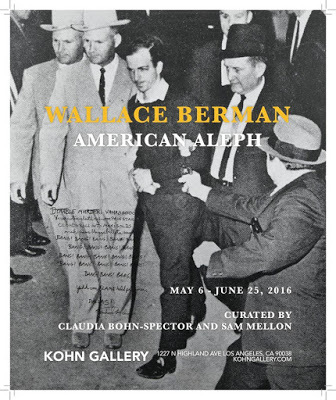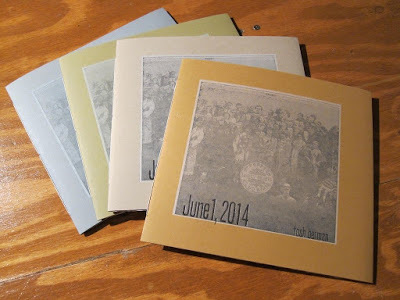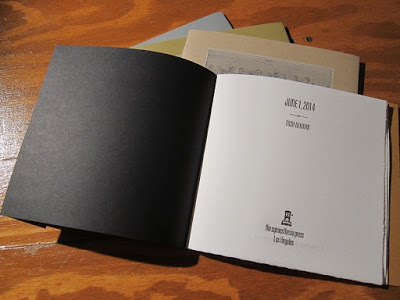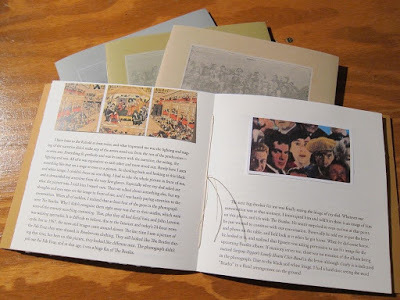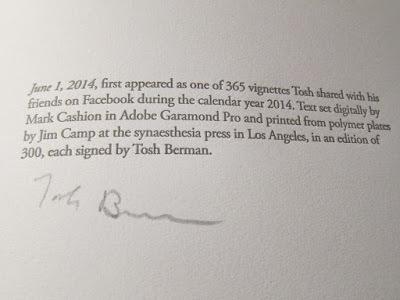Tosh Berman's Blog, page 184
April 13, 2016
Look at Life - Coffee Bar, 1959
Soho Coffee cafe culture circa. 1959. Best documentary so far this year.
Published on April 13, 2016 08:36
April 12, 2016
"Humiliation" by Wayne Koestenbaum
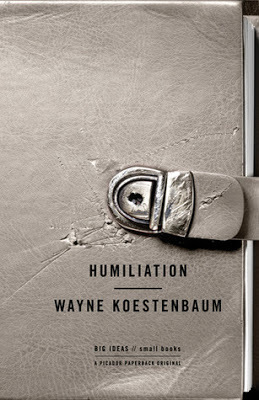 ISBN: 978-0-312-42922-5 A Picador Paperback Original
ISBN: 978-0-312-42922-5 A Picador Paperback Original“Humiliation” by Wayne Koestenbaum (A Picador Paperback)
I don’t have many, but the few humiliations that I went through in my life I have totally erased them, except I do remember, but it’s so deep into my consciousness, it’s like a ghost thought. On the other hand, Wayne Koestenbaum faces up to his humiliations as well as pointing out other artists and public figures who experienced the terribleness of being exposed to the most fearful humiliation possible. I’m a fan of Koestenbaum’s writing, which is everywhere on the map of literature. His shot Penguin biography on Andy Warhol, is one of the best books on that subject matter, and I also enjoyed his essays focusing on the 1980s. “Humiliation” maybe his best book, because it is something that we all can share with - that feeling or point of time, when the unmentionable happens and how we deal with it.
WIth the subject matter of Humiliation, Koestenbaum finds the perfect personalities to accompany that pain. Michael Jackson (great take on him), Jean Genet, Liza Minnelli, Alec Baldwin, and of course, himself. As I read this book, I feel a tinge of pain. That, comes with the territory. Superb book.
- Tosh Berman
Published on April 12, 2016 15:19
April 10, 2016
Tony Conrad - The Interview
A fascinating interview with Tony Conrad.
Published on April 10, 2016 08:49
April 9, 2016
Tony Conrad
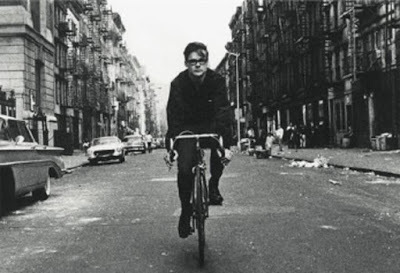
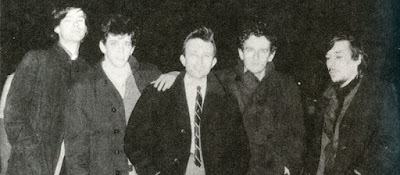
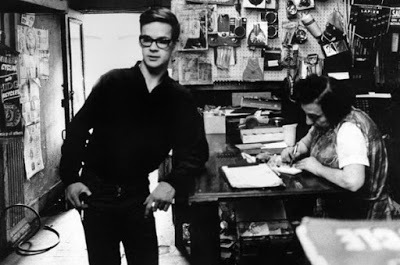
I have just heard about the passing of Tony Conrad - filmmaker and musician/composer. I listen to his music on a regular basis, especially while I'm writing. I met him once at the Filmmaker's Anthology, and I can say that both of us were working in the same room at the same time. Separate projects yes, yet I was there in that room with him. As he was editing a film, he would often hum very loudly. 2016 has been a tragic year of major figures in my life, who are disappearing on this planet.
You can hear one of his many masterpieces here: https://www.youtube.com/watch?v=FGMnDcwoXns
Published on April 09, 2016 11:55
April 7, 2016
"Off-Screen Cinema: Isidore Isou and the Letterist Avant-Garde" by Kaira M. Cabañas
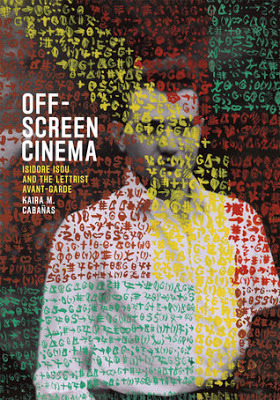 978-0-226-17459-4 University of Chicago Press
978-0-226-17459-4 University of Chicago Press"Off-Screen Cinema: Isidore Isou and the Letterist Avant-Garde" by Kaira M. Cabanas (University of Chicago Press)
After going to a series of films in various theaters lately, I have now come to the conclusion that the cinema is truly dead. It is like time stopped about twenty-years ago and nothing has changed. For inspiration, I have always looked back at an age that seemed to embrace the new. I have become fascinated by the Letterist movement due to their interest in art, cinema and literature. In fact, their work usually consists of all three mediums in the same world, or even spot. Over-all, they have challenged the idea of an audience watching a film, and the interaction between the viewer and what is projected on the screen. I purchased a film "Traité de bave et d'éternite' (on DVD) by Isidore Isou. Which is sort of ironic, because I'm sure the film works better in a theater environment than say my living room with two speakers. Nevertheless, I imagine myself in the theater sometime in the post-war years in Paris, and being confronted by this work. In many ways, it is a city film - being Paris. Makes it interesting just due to the character of the urban dream of that time. Kaira M. Cabanas' book length study on the films that were made by the Lettersets - is much needed. Besides Isou, there were Guy Debord, Gil J. Wolman, Maurice Lemaître, and François Dufrêne. Due to the rarity of these films, I haven't seen all of them. So, of course, the book raises one's curiosity - but Cabanas' take on these works, just makes it more interesting. The illustrations that are in the book are superb, and this is clearly a must-have if one is interested in avant-garde cinema, but also the culture of the Letterists which eventually turned into the Situationists - and beyond that to the world of Yves Klein and Marcel Broodthaers. There is also a touching set of letters from Stan Brakage to both Isou and Lemaître. Superb book.
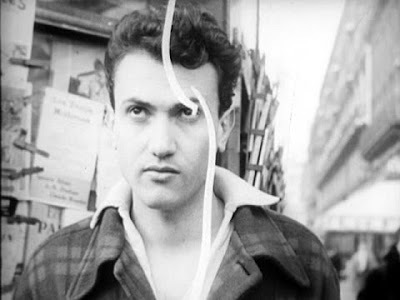 Isidore Isou in his film Traité de have et d'éternité
Isidore Isou in his film Traité de have et d'éternité- Tosh Berman
Published on April 07, 2016 17:42
TamTam Books' Tribute to artist Rinus Van de Velde
 Rinus Van de Velde
Rinus Van de Velde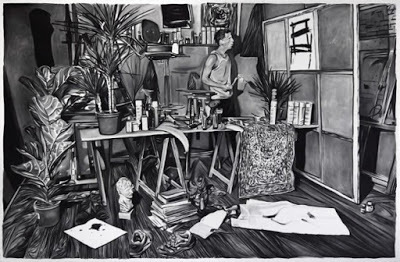 Rinus Van Velde "Self-Portrait as Franz Kline, 2013 180 x 270 cm
Rinus Van Velde "Self-Portrait as Franz Kline, 2013 180 x 270 cm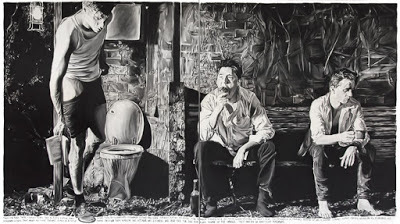 Rinus Van Velde
Rinus Van Velde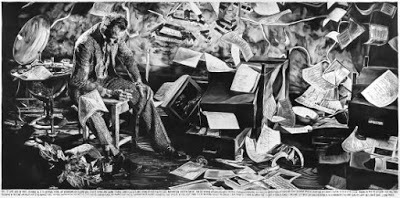 Rinus Van Velde
Rinus Van Velde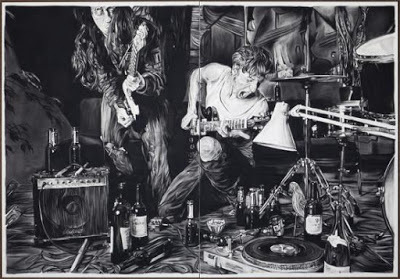 Rinus Van Velde
Rinus Van Velde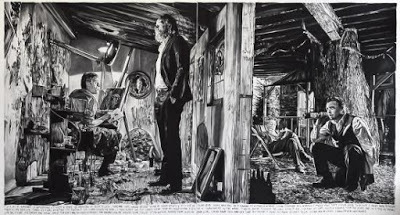 Rinus Van Velde
Rinus Van VeldeMy new discovery of the day. It's raining and I'm inside trying to think of something good, and I came upon Rinus Van Velde's paintings in a recent issue of ARTFORUM. I was immediately struck by its scope and vision. The artist works from photographs, which I believe he takes himself. You can't really see it on this blog, but he also includes texts in his work. So there is a narration of sorts - which I believe is fictional.
Here is an interview with him in English:
http://www.thewordmagazine.com/art/an-interview-with-belgian-painting-prodigy-rinus-van-de-velde/
Here is an interview with Rinus Van Velde and his obsession with Bobby Fischer. https://www.youtube.com/watch?v=K64XrDv762I
Published on April 07, 2016 16:56
April 2, 2016
"Ways of Curating" by Hans Ulrich Obrist (Faber & Faber)
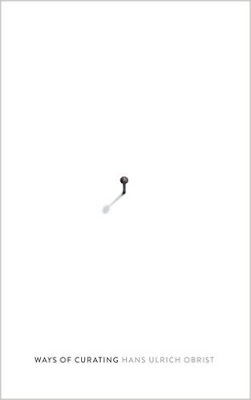
"Ways of Curating" by Hans Ulrich Obrist (Faber & Faber)
The skill of curating is really putting two or more ideas together and placing it in a space. Beyond that it can mean anything. Generally speaking when we hear the word "curate" that means someone with a point-of-view, or subjective thoughts puts something together so we can explore that curator's thinking or world. Well, at least, in theory. Without a doubt one of the more interesting curators in contemporary art is Hans Ulrich Obrist. I have never seen any of his exhibitions, but I do know him through his books and essays. His best skill is that he has a basic curiosity in how an artist works and thinks. He is also interested in places, cities, and locations where one can exhibit ideas or more likely art. The curator is often just as creative as the artist. Which is sometimes a good thing, and often not that good of a thing.
Basically an artist makes a work, and if they are lucky it goes out to the world. In a lot of cases, there is usually someone who takes that work and places it in a room with another work of art. It can be a random act, but more likely the person (the curator) who does that is looking for themes or a feeling between the artworks. At times, I find this misleading to the artist's intent, and on occurrences, it brings up new light or a way of looking at that art. Especially if you know the artist and their work. So, in a sense, the curator is sort of like a film editor working with a filmmaker.
The great thing about Obrist is his interest in contemporary art and its past. He also knows that literature, architecture and personality is also part of the big picture - in other words, everything has a place or importance, and therefore so does art. The tricky aspect is how and when one place that work in a bigger picture or landscape. "Ways of Curating" is very much Obrist's thinking in these matters as well as the history of curating, which is fascinating. Modern curating (at least to Obrist) started in the 19th century in Paris. At one time, paintings were hung salon style which is a lot of work on one wall. Monet and others started a practice where a painting stands by itself on a large wall, and therefore one concentrates on that one piece. Salon style exhibition is fascinating, but for me, it's hard for me to focus on individual works, yet people in the 19th century used to see art in this fashion.
"Ways of Curating" reads not like a book, but more of a collection of essays on the subject matter of curating. For me, it would have been more fascinating if he just focused on its history, like he did in the first part of the book. The second part is basically his career and what he has done, which is perfectly fine, but the writing gets kind of 'been there and done that' type of feeling.
Nevertheless, this is a very accessible book to someone who is curious about that world, but really doesn't know too much about the nature of art exhibitions, and how they are planned out.. Orbits has many books out, and the best one's are his interview books with various contemporary artists and composers. He is an interesting guy, and "Ways of Curating" is both good and so-so, but still important of a subject matter to read.
- Tosh Berman
Published on April 02, 2016 16:03
March 31, 2016
Wallace Berman American Aleph at the Kohn Gallery May 6 - June 25, 2016
Published on March 31, 2016 22:39
March 27, 2016
March 19, 2016
"The Crippled Giant: A Literary Relationship with Louis-Ferdinand Céline" by Milton Hindus
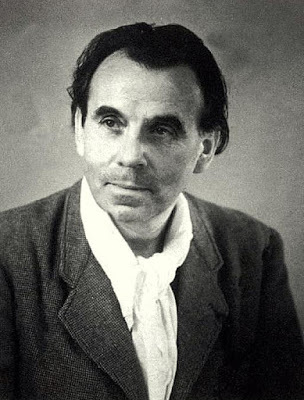 Louis-Ferdinand Céline"The Crippled Giant: A Literary Relationship with Louis-Ferdinand Céline" by Milton Hindus
Louis-Ferdinand Céline"The Crippled Giant: A Literary Relationship with Louis-Ferdinand Céline" by Milton HindusLouis-Ferdinand Céline is endlessly fascinating. For obvious reasons when I think of the publishing house New Directions, I always think of Céline along with that press. I first started reading his work, due to the love of his stylist language, or at least, the english translation of his work. There is something punk-like in the way he saw his world. The fact that he wasn't exactly a huge fan of the jews, just added a 'wow' aspect to his work. And by no means, a 'wow' in a good way. Still, a remarkable figure who lived through the wars, and I think, suffered from them as well.
"The Crippled Giant" is an interesting and odd book. Milton Hindus, a literary academic type of fellow, as well as being jewish, became an acquaintance of Céline - in fact, he helped him a lot during the late 1940s, when he was exiled in Denmark, due to his kind-of-pro-nazi stance. The fact is, I think Céline was just a miserable human being, but also a genius stylist - and Hindus had to deal with that fact. The book starts off as a memoir of him knowing and visiting Céline, but then becomes a lit-crit of his writings. The first two-parts of the book are very so-so to me, on the other hand, the last third of the book is devoted to their correspondence to each other. That, I found much more interesting.
Through the letters, one gets a better (not always in a good way) impression of Céline's personality, and to be thankful, Hindus doesn't back down from him. Yet, he was very supportive, especially arranging business dealings with New Directions in New York, as well as sending him coffee time-to-time. Since I'm a publisher myself, I found the discussion between Céline and Hindus regarding the publishing world in France as well as in America, totally intriguing. Their relationship didn't last, but, this book gives us a peak behind the curtain that surrounds the often-mysterious Céline. And for that, I'm thankful for this book.
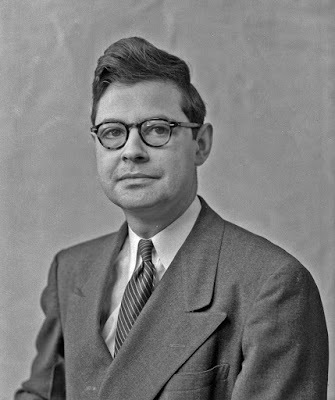 Milton Hindus- Tosh Berman
Milton Hindus- Tosh Berman
Published on March 19, 2016 15:03

